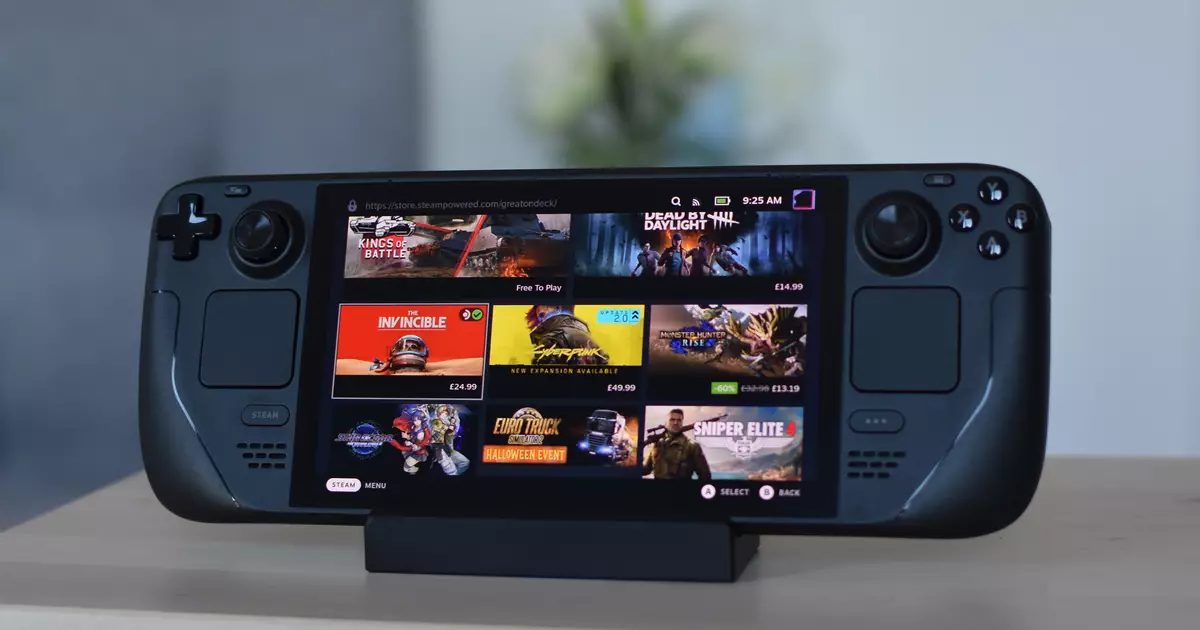Renowned for its commitment to innovative gaming experiences, Valve is reportedly eyeing a new direction in its hardware development strategy. According to recent insights from NotebookCheck, Valve may be considering a transition from its traditional x86 architecture to ARM-based processors, which have gained significant traction in the world of gaming. This proposed shift comes on the heels of the success of their previous hardware ventures, such as the Valve Index and the Steam Deck series, raising questions about the potential impact of this move on future gaming solutions.
ARM architecture, prevalent in devices like the Nintendo Switch and modern Macs, is celebrated for its power efficiency. This characteristic could play a pivotal role in the design of future Valve hardware, like a next-generation Steam Deck or advanced VR headsets. With mobile gaming on the rise and the compatibility of ARM with the Android operating system, Valve could widen its gaming library by enabling mobile game access on PC platforms, streamlining user experiences unlike any we’ve seen with traditional x86 systems.
However, while the benefits of adopting ARM architecture are compelling, several challenges loom on the horizon. The majority of mainstream PC games have historically been developed with x86 compatibility in mind, creating potential hurdles for any transition. Valve’s Proton, a compatibility layer that facilitates the run of Windows games on Linux-based SteamOS, would need to evolve significantly to accommodate this shift. Running these games on ARM would likely require sophisticated emulation processes, a transition that could impact performance and framerate, ultimately affecting user satisfaction.
The Proton Factor: A Compatibility Challenge
Proton’s fundamental purpose is to break through compatibility boundaries, allowing gamers to enjoy titles that would otherwise be inaccessible on Linux systems. However, adapting it for ARM architecture is no small feat. The complexities involved in ensuring that performance remains consistently high, without sacrificing the integrity of gameplay experiences, could be daunting. Historically, attempts to emulate x86 games on ARM have resulted in performance compromises, fueling concerns among gamers and developers alike.
It’s worth noting that while modern ARM chips boast impressive capabilities, the challenge lies in adapting the software ecosystem to ensure seamless interaction with the new hardware. The key question remains: can Valve successfully cultivate this compatibility, or will the performance pitfalls tarnish the user experience?
Valve’s track record in the hardware sphere indicates a pattern of persistent innovation, albeit with a few missteps along the way. Since the introduction of its initial Steam Machines, the company has remained in the hardware game. Yet, the prospect of pivoting to ARM signifies a watershed moment that could redefine gaming hardware paradigms.
While speculation about a new generation of Steam-branded devices circulates, it’s essential to examine the broader implications regarding consumer needs and industry trends. The shift toward streamlined, user-friendly devices that prioritize performance and portability suggests that Valve isn’t just reacting to current market dynamics; they may be positioning themselves as forerunners in the evolving landscape of gaming hardware.
In particular, the potential for a standalone VR headset powered by ARM technology raises interesting prospects. With the increase in demand for portable, high-performance gaming experiences, such a device could capture significant consumer interest and elevate VR gaming to new heights. Moreover, if Valve successfully navigates the challenges associated with ARM architecture, we could see the emergence of a new generation of Steam Machines that might push the boundaries of what’s possible in gaming.
The possibility of Valve transitioning from x86 to ARM architecture is a thought-provoking proposition that sparks excitement and debate within the gaming community. While there are undeniable advantages to adopting ARM, coupled with challenges that must be addressed, Valve’s legacy of innovation suggests they’re well-equipped to navigate these waters.
As the gaming hardware landscape evolves, fans and analysts alike will be watching closely to see how Valve harnesses this new potential. Whether this results in a breakthrough in gaming performance, an expansion of gaming libraries, or an unexpected product launch, one thing is clear: Change is on the horizon, and the gaming world is poised for a thrilling ride ahead.


Leave a Reply